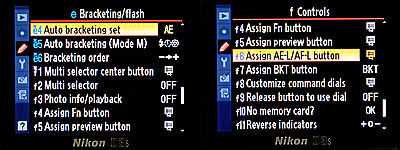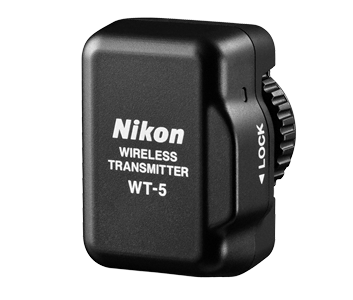Whether at the ballpark or via email, two of the most frequently asked questions I hear are “what are your basic settings when shooting sports using the Nikon D3s” or “how is your Nikon D3s set up?
I’ve been shooting sports for a living for over 25 years, with clients ranging from Sports Illustrated to Major League Baseball and The Chicago White Sox. The approach I use when setting up with my equipment might not be considered conventional, but I can tell you this; it works. I refer to it as my unscientific approach to better sports photography. I trust and believe in what works in the real world. I’m always open to new ideas and so should you. If your images are already perfect, stop here. But if you shoot sports action and are looking for ways to improve your images and increase your “keeper percentage”, or are setting up a Nikon D3s for the first time, read on.
I decided to dissect the menu of my trusty D3s and share my personal settings while discussing a few in detail so that other sports photographers can use them as a point of reference. As the old adage goes, please remember that these are my own personal settings and opinions and should be used as a guide only. No one set of rules (or in this case, settings) should be considered the absolute only way to go. I highly recommend taking the time to experiment and come up with a few of your own favorites.
PLAYBACK MENU
Display Mode: Detailed Photo info (highlights, RGB histogram)
Image Review (OFF)
After Delete (Show next)
Rotate tall (OFF)
SHOOTING MENU
File naming (Set unique file name here for each camera)
Image quality (JPEG FINE or RAW + JPEG FINE)
Image size (Large)
Image area (Auto DX Crop)
JPEG compression (Optimal quality)
NEF RAW recording (Type: ON: Lossless compressed, 12 bit depth)
White balance (auto for most, but manual kelvin adjustments when appropriate is my other favorite option)
Set Picture Control (SD – Standard)
Color space (Adobe RGB)
Active D-Lighting (OFF)
Vignette control (HIGH)
Long exp NR (ON) This setting comes into play automatically for exposures longer than 1 second. Note that when this option is turned on, the processing time equals the exposure time. For example, an 8 second exposure will take 8 seconds to process before the camera is ready to fire again.
High ISO NR (HIGH)
ISO sensitivity Currently used ISO setting. Don’t be afraid to ramp up the ISO. It’s one of the premier features of the D3s. I recently photographed an indoor, dimly lit concert setting at 12, 800 ISO (yes, twelve THOUSAND, eight hundred ISO) and the results were stunning. So much so that I had to ADD noise while making a 16×20 black and white print because the shadows were TOO clean. See for yourself.
CUSTOM SETTING MENU
a Autofocus:
a1 AF-C priority selection: Release
a2 AF-S priority selection: Release
a3 Dynamic AF Area: 21 points
a4 Focus tracking with lock-on: AF-2 (between Normal and Short)
a5 AF activation: OFF
a6 Focus point illumination:
Manual focus mode: ON
Continuous mode: ON
Focus point brightness: 0
a7 Focus point wrap-around: OFF (No wrap)
a8 AF point selection: AF11 (11 points)
a9 AF-ON button: AF-ON (allows user to manual focus or recompose while maintaining focus on off-center subject)
a10 Vertical SF-ON button: AF-ON
b Metering/exposure:
b1 ISO sensitivity step value: 1/3 step
b2 EV steps for exposure cntrl: 1/3 step
b3 EV steps for exposure comp.: 1/3 step
b4 Easy exposure compensation: OFF
b5 Center-weighted area: 15 (15 mm)
b6 Fine tune optimal exposure: NO
c Timers/AE lock
c1 Shutter-release button AE-L: OFF
c2 Auto meter-off delay: 6 seconds
c3 Self-timer: 10 seconds
c4 Monitor off delay
Playback 10s
Menus 10s
Information display 10s
Image review 4s
d Shooting/display
d1 Beep: OFF
d2 Shooting speed:
Continuous high-speed 11fps
Continuous low-speed 5fps
d3 Max continuous release: 130
d4 File number sequence: ON
d5 Control panel/viewfinder:
Rear control panel: ISO sensitivity
Viewfinder display: Exposures remaining
d6 Information display: (B Manual Dark on light)
d7 Screen tips: ON
d8 LCD illumination: OFF
d9 Exposure delay mode: OFF
e Bracketing/flash
e1 Flash sync speed: 1/250 s
e2 Flash shutter speed: 1/60 s
e3 Modeling flash: ON
e4 Auto bracketing set: AE only (helpful for HDR photography)
e5 Auto bracketing (Mode M) (Flash/speed/aperture) HDR
e6 Bracketing order (Under > MTR > over)
f Controls
f1 Multi selector center button:
Shooting mode: RESET: Select center focus point
Playback mode: Zoom on/off: Medium magnification
f2 Multi selector: OFF
f3 Photo info/playback: OFF
f4 Assign Fn button: OFF (maintains default setting enabling quick DX crop mode selection)
f5 Assign preview button: Preview
f6 Assign AE-L/AF-L button: AE/AF lock
f7 Assign BKT button: BKT
f8 Customize command dials:
Reverse rotation: OFF
Change main/sub: OFF
Aperture setting: ON
Menus and playback: OFF
f9 Release button to use dial: OFF
f10 No memory card?: LOCK (Release locked)
f11 Reverse indicators: -0+
SETUP MENU
LCD brightness: Adjust to ambient light conditions so that the gradients are evenly displayed. Doing so will produce an accurate image preview.
Auto image rotation: ON
Copyright information: ON
AF fine tune: USE IT! Great tool.
Clean image sensor: Clean at start-up and shut-down
RETOUCH MENU
Standard settings: I don’t use anything in this area.
MY MENU
I love MY MENU. I can put my most frequently used menu items in one place for easy, quick access. The ones I use are:
• LCD Brightness (my number one menu item, I adjust this to ambient light constantly, to insure that my image previews are accurate. If you don’t adjust the LCD, you run the risk of improperly exposed images should the preview be your primary judge of accurate exposure).
• AF Fine Tune (an important tool to ensure accurate, “razor sharp” focus tuning, matching the camera body to each lens combination. USE IT)
• Lock Mirror up for cleaning
• a4 Focus tracking with lock-on (AF 2) (normal usually, also normal to short) See my notes below.
• Battery info (detailed look at the condition and age of the battery, for the never enough info geek).
• Multiple Exposure (easy access when feature is desired)
• d4 File number sequence (ON) (just in case you wish to manually reset)
• e4 Auto Bracketing set (AE ONLY) Helpful for HDR photography
• High ISO NR (HIGH)
• Long exp NR (ON)
• Color space (Adobe RGB)
• e1 Flash sync speed (1/250)
My Favorites – Reasons why I have chosen certain settings:
a1 AF-C priority selection (On Release)
While shooting sports, I would rather take my chances and maintain the highest continuous shooting speed (11 fps) and select the best/sharpest images during post processing than having the camera “edit” for focus for me. This is just my personal preference.
a4 Focus tracking with lock-on: AF-2 (Normal most of the time, occasionally between Normal and Short)
I found that if I set the focus tracking too short my selective focus tends to jump too easily to other objects. For example, say a base runner is stealing second base and the umpire moves in front of the runner to get in position to make the call. If focus tracking with lock-on is set too short, the focus point may jump from the subject (the runner) to the umpire. When working under conditions when other objects can easily interfere with maintaining focus on your intended subject, I highly recommend keeping the focus tracking lock-on setting on Normal. Experiment for personal taste.
a9 AF-ON button
I have never been a big fan of having the auto focus function tied in with the shutter release button, preferring instead to keep the auto-focus and shutter release functions separate. I utilize what I like to call the “back button” to enable auto-focusing. When I see other objects blocking the view of my intended subject I’ll temporarily go “off the button”, then when the “view clears”, I’ll get back “on the button” to quickly lock back onto my subject. Using the “back button” I can also easily manually focus. I personally find using the rear or vertical release AF-ON button much more intuitive when using auto-focus while shooting sports than depressing the shutter release halfway.
b1, b2, b3 exposure steps: 1/3 step
I know digital images are much more “forgiving” than film, especially more than slide film ever was, but my approach when calculating proper exposures from years of shooting film has carried over into the digital age. I attempt to make sure my final exposures are as close to perfect as they can be. Even a ½ step is too much for my taste, so I’ve selected the 1/3 step option. For a guy that used to push film in 1/4 stop increments, old habits die-hard.
F1 Multi selector center button
One of the coolest and possibly most overlooked features on the Nikon D3 line of cameras. Here are my reasons to set and utilize this feature:
Shooting mode: RESET: Select center focus point. This great tool allows you to quickly reset the focus point back to center after moving it elsewhere when composing and focusing off center. Try it and see for yourself. You will probably make more on the fly focus point adjustments now that you know this feature exists.
Playback mode: Zoom on/off: Medium Magnification. One push of this button and you will have an instant image preview at a magnification similar to viewing at 100% magnification during post-processing. Another push of the button returns the image preview back to normal. Forget pressing and holding two controls and progressively (and slowly) adjusting the magnification level to inspect focus. Bang, bang, done. When shooting sports, every time saver helps. This is a big time saver.
F10 No memory card? LOCK (Release locked)
Have you ever started shooting and after a few minutes realized that there was no card in the camera? Shortly after this unpleasant discovery you then come to the not so happy conclusion that the great frames you just made aren’t so great after all since they don’t exist? Prevent this from happening. Lock it. This setting should be a no brainer.
LCD brightness
I can’t believe how many photographers don’t bother to adjust their LCD brightness to a proper lever, which should be set based on the level of ambient light. These same photographers then use the image preview on their non-adjusted LCD to base proper exposures on, only to find they are either way under or way over exposed, albeit when it’s too late. A simple adjustment of the LCD brightness (to bring the graph to a level where the graduations are evenly displayed from darkest to lightest) is worth the 2 seconds it takes to make the adjustment. This minor tweak, combined with learning how to use and read the readily available image histogram, will help make accurate exposures second nature.
AF Fine tune
Another extremely helpful tool. Often, while camera and lens tolerances are usually fine right out of the box, certain combination’s of bodies and lenses may need some individual tweaking or matching to fine-tune autofocus. Now, instead of having to ship the bodies and lenses off for calibration, autofocus fine-tuning can be done in the field. While there is aftermarket hardware available to help perform this task, I found that I can make autofocus fine tuning adjustments in the field by simply focusing of a stationery object of decent contrast where depth of field can be easily defined (such as an athlete standing still on infield dirt or grass, or some other stationary object such as a brick wall) and making a few test frames. These fine-tuning adjustments can be made quickly and quite accurately. After reviewing the test images and using some trial and error, I have been able to fine-tune autofocus on every camera body/lens combination I own to a degree of satisfaction that works well for me. For fun, try testing over the entire range of adjustments, from -20 to +20 in increments of 5. Upon reviewing them all, you will find one setting that definitely stands apart from the others. I’m not discounting the aftermarket hardware tools available, I’m only stating that I’ve been able to make the necessary autofocus fine-tune adjustments on the fly using this method and it works. The best feature within this feature? The camera will store the information so the next time the body is matched to the same focal length lens it remembers the fine tune adjustment so that rechecking isn’t necessary.
Okay, enough said! Get your D3s, set up your menu then go out and make some pictures!
Click here for a PDF version of this article.








Not knowing Ron, as long as most, he is a breath of fresh air to be around. His constant smile, watchful eye over his domain and his willingness to share information that most are so protective of, is very much appreciated.
Hat’s off to Ron for sharing his settings and knowledge that most of us are either too lazy or should I say ‘time impaired’ to figure out on our own.
Ron, thank you
Warren
You’re welcome, Warren! Time for me to share. Why keep knowledge a secret?
Great stuff Ron,
Thanks for that. The auto focus thing has alway’s thrown me a little. Got my new D3s on Saturday and really love it. Did a spot of soccor,so fast! I assume for boxing etc…. I would have my focus set to long rather than short or normal?
Thanks
Marko
Thanks,
I will have to try these settings.
I just got my D3S and have been using my d800 in the hockey arena. Not fast but quality was amazing…
Shot one game with the D3s and not happy with the outcome at all…..
I will try these settings and see how they work.
Thanks
Ron: I really enjoyed this article, especially since the D3s settings I’ve somehow managed to stumble upon over the past couple of years match yours for the most part. Dumb-luck on my part.
One glaring omission in my own settings is LCD brightness, which, after reading your rationale for resetting brightness to match ambient light, and therefore getting image brightness levels closer to ideal, has me kicking myself for not doing that simple thing all along. Live and learn.
Another setting that I’ve recently been trying, with some good results, is Auto-ISO. This has worked out well when shooting events such as yacht racing where the targets quickly go from bright to dark and back again, all while holding the camera with one hand and trying to keep myself onboard the photo boat with the other hand.
Would you mind sharing your opinion on using Auto-ISO?